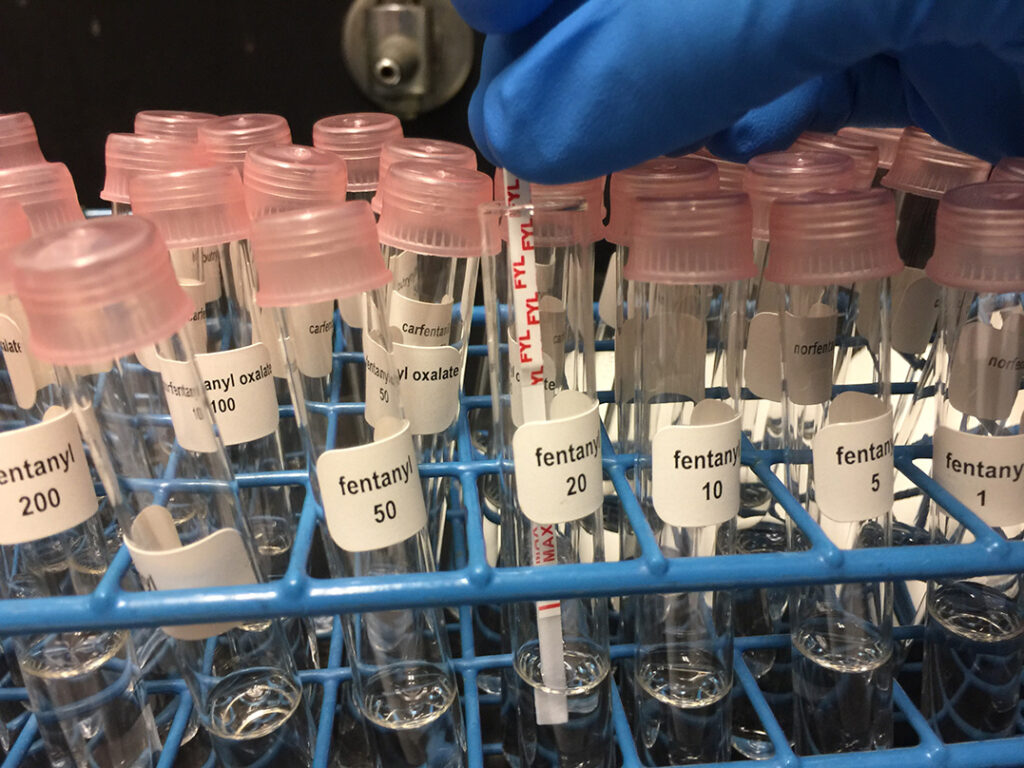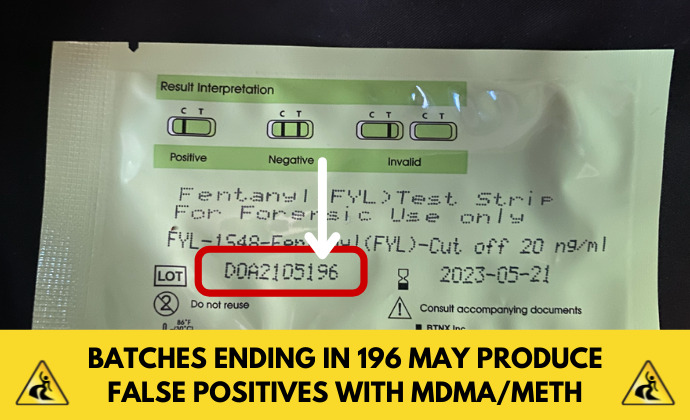The Secret History of Fentanyl Test Strips
The Secret and Somewhat Sordid Story Behind Fentanyl Test Strips
Lack of Federal Regulation and Low Industry Standards Put Lives at Risk
By Emanuel Sferios, DanceSafe founder
June 15, 2023

Introduction
In the middle of a growing, international overdose crisis with more than 100,000 drug-related deaths per year in the US alone, competitive binding immunoassay technology—in the form of fentanyl test strips—offers the only affordable, consumer-based tool capable of detecting the presence of fentanyl in illicit drugs. Fentanyl test strips have the potential to save thousands of lives. They have become increasingly relied upon by people who use drugs, as well as state, municipal and other nonprofit harm reduction programs, as a way to prevent accidental overdoses.

But something is not right. Widespread false positives when testing meth, cocaine, and MDMA, as well as extreme variations in strip sensitivity and performance (noted by harm reduction programs and detected in recent lab studies) have cast doubt on the reliability of fentanyl test strips (FTS) as a harm reduction tool. In this article I am going to explain exactly what is going on here, and present a solution. This article is not flattering to the immunoassay test strip industry, which is far more unregulated than I ever imagined, and awash in deceit and willful ignorance. As more and more FTS distributors enter the harm reduction market, it behooves all of us to understand how this industry operates, why strips sold by the same distributor, under the same brand, often behave differently, and why FTS industry standards for drug checking need to be far higher than they currently are for urine testing (which isn’t that high to begin with).
- Part I – How it All Got Started
- Part II – How the Industry Operates
- Part III – Ensuring Accuracy and Lot-to-Lot Consistency
How it All Got Started
On October 28th, 2016, I began a journey that I never imagined would take me where I am today. It began with an email I sent to Gantt Galloway. Gantt is longtime friend of mine, founder and former Executive Director of New Leaf Treatment Center in El Cerrito, California, and an expert in the field of addiction research and neuropharmacology. He was one of my earliest advisors back in 1999 when I started DanceSafe, and on this particular day, less than two weeks before Donald Trump won the Presidential election, I needed his help.
You see, a few months earlier, Insite, a safe injection site in Vancouver, Canada, announced the results of an informal study they undertook using fentanyl test strips to detect fentanyl in the drugs their clients brought in to consume. The study showed that 86% of the drugs tested, including non-opioids like methamphetamine, contained fentanyl. Yet a CBC article I read that day reported that the College of Pharmacists of Manitoba had stepped in to stop the distribution of these strips to people who use drugs. They were concerned about accuracy, because fentanyl test strips had never been properly assessed for drug checking. “They’re strictly approved for urine samples,” said Michael Watts, owner of Brothers Pharmacy in Winnipeg.
They had a point. And that’s why I emailed Gantt. I wanted to commission a lab study, and Gantt would know how. If we could determine that the strips work for drug checking, we could publish the study, paving the way for their widespread acceptance as a legitimate harm reduction tool. Or if they didn’t work, at least we would know.
Gantt introduced me to Dr. Kara Lynch and Dr. Daniel Ciccarone at UCSF. Kara is the Co-Director of the Zuckerberg Clinical Laboratory at San Francisco General Hospital, and Daniel is a Professor of Family and Community Medicine specializing in the opioid epidemic. When I contacted them about helping me conduct a comprehensive study on fentanyl test strips for drug checking, they were both eager to help. The idea was to assess a variety of brands of fentanyl test strips to determine their sensitivity to fentanyl and its analogs, as well as their potential false positive sensitivity to the most commonly used illicit drugs. If the sensitivity was high enough for fentanyl and its analogs, and low enough for other drugs, we could calculate the appropriate dilutions needed for drug checking.

Leave a Reply